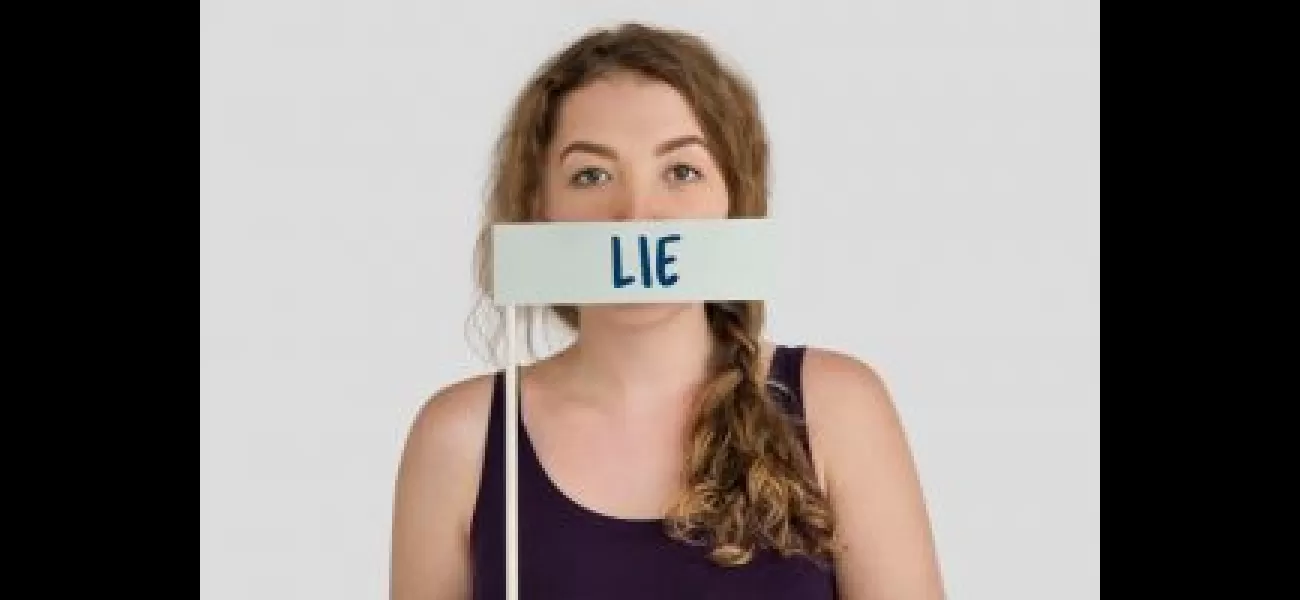We struggle to identify lies due to our natural inclination to trust others and our reliance on nonverbal cues.
San Francisco: People lie often and it is difficult to tell when someone is lying. Research shows that we are not good at detecting lies.
June 14th 2024.

Living in San Francisco, you don't need to be in the midst of an election campaign to feel concerned about your ability to detect lies. According to psychology research, people lie at least once a day. In fact, a review of 206 papers back in 2006 revealed that we are not much better than chance when it comes to distinguishing between lies and truth - only 54% accurate.
Some lies are told with good intentions, to make others feel better. For example, I wouldn't mind if someone told me I was a brilliant psychologist, even if it wasn't entirely true. However, most lies are told for the benefit of the person speaking them. We learn how to lie at a young age, typically between two and three years old. It takes a bit longer and a more developed understanding of others' thoughts and feelings to become skilled at lying during childhood.
Having a good working memory is also important in convincing others of a lie, as it helps us remember the details of what we have said. Interestingly, brighter children tend to lie more often and for their own selfish reasons. By the time we reach adulthood, we have had plenty of practice and are quite skilled at deceiving others.
There are no specific physical signs that someone is lying, but there may be subtle indicators of negative emotions associated with lying, even when the liar is trying to conceal them. These can manifest in micro-expressions - brief facial expressions that only last for a fraction of a second. Alternatively, the liar may try to cover up their emotions with a mask, often in the form of a fake smile. A fake smile can be recognized by the lack of movement in the muscles around the eyes and how quickly it fades, in contrast to a genuine smile that fades more slowly.
However, the challenge with these nonverbal indicators is that most of us would need to watch the person's behavior in slow motion to pick up on them. For example, avoiding eye contact is often seen as a sign of deception, and my own mother used to catch me in a lie by moving closer and asking about the previous night's activities. However, avoiding eye contact is not a reliable indicator of lying, as it can also be affected by our cognitive activity, such as planning our speech or accessing our memory.
Furthermore, liars are aware of the stereotype that avoiding eye contact can be a sign of lying, so they may make a conscious effort to maintain eye contact to appear more believable. They may also plan their lies in advance and incorporate some elements of truth to make their story more convincing. Additionally, interpersonal distance can also affect eye contact - it can be difficult to maintain eye contact when someone is sitting very close and staring at you. This is known as the intimacy equilibrium model, where certain behaviors, such as eye contact, distance, and conversation topics, are used to signal intimacy. When the distance changes, we unconsciously adjust our behavior to maintain this equilibrium. So, when my mother moved closer to interrogate me, I instinctively looked away, giving her the evidence she was looking for.
This is an example of confirmation bias, where we unconsciously influence the behavior we are looking for. It's not just my mother who falls victim to this - a study from 1978 showed that police officers tended to move closer to suspects they believed were guilty, and the suspects would often look away, further supporting the officers' belief. However, observers usually do not notice these subtle changes in distance.
Moreover, our judgments of trustworthiness are often made unconsciously and rapidly based on a person's facial expressions. Once we have decided that someone appears trustworthy, we may not pay as much attention to cues of deceit. This makes it easier for skilled liars to manipulate our intuition and fool us. They know exactly what we are looking for and make sure to control those behaviors - good eye contact, a convincing smile, and a well-prepared speech with minimal hesitation. They may even convince themselves of the truth of their lie, reducing any emotional response that could give them away.
In his book, "Lies, Lying and Liars: A Psychological Analysis," Professor of Psychology Geoff Beattie from Edge Hill University studied many expert liars and how they use our intuition against us. For example, some of his informants confessed to intentionally disrupting their usual behavior when lying, to throw off anyone trying to detect their lies. Additionally, a person's personality also plays a role in detecting lies. There is no point in looking for micro-expressions of guilt, shame, sadness, or fear if the person is not feeling those emotions inside. Some individuals actually enjoy lying - they find it exciting and are not concerned about the consequences. In these cases, any micro-expressions may be positive, further complicating the already difficult task of detecting lies.
Some lies are told with good intentions, to make others feel better. For example, I wouldn't mind if someone told me I was a brilliant psychologist, even if it wasn't entirely true. However, most lies are told for the benefit of the person speaking them. We learn how to lie at a young age, typically between two and three years old. It takes a bit longer and a more developed understanding of others' thoughts and feelings to become skilled at lying during childhood.
Having a good working memory is also important in convincing others of a lie, as it helps us remember the details of what we have said. Interestingly, brighter children tend to lie more often and for their own selfish reasons. By the time we reach adulthood, we have had plenty of practice and are quite skilled at deceiving others.
There are no specific physical signs that someone is lying, but there may be subtle indicators of negative emotions associated with lying, even when the liar is trying to conceal them. These can manifest in micro-expressions - brief facial expressions that only last for a fraction of a second. Alternatively, the liar may try to cover up their emotions with a mask, often in the form of a fake smile. A fake smile can be recognized by the lack of movement in the muscles around the eyes and how quickly it fades, in contrast to a genuine smile that fades more slowly.
However, the challenge with these nonverbal indicators is that most of us would need to watch the person's behavior in slow motion to pick up on them. For example, avoiding eye contact is often seen as a sign of deception, and my own mother used to catch me in a lie by moving closer and asking about the previous night's activities. However, avoiding eye contact is not a reliable indicator of lying, as it can also be affected by our cognitive activity, such as planning our speech or accessing our memory.
Furthermore, liars are aware of the stereotype that avoiding eye contact can be a sign of lying, so they may make a conscious effort to maintain eye contact to appear more believable. They may also plan their lies in advance and incorporate some elements of truth to make their story more convincing. Additionally, interpersonal distance can also affect eye contact - it can be difficult to maintain eye contact when someone is sitting very close and staring at you. This is known as the intimacy equilibrium model, where certain behaviors, such as eye contact, distance, and conversation topics, are used to signal intimacy. When the distance changes, we unconsciously adjust our behavior to maintain this equilibrium. So, when my mother moved closer to interrogate me, I instinctively looked away, giving her the evidence she was looking for.
This is an example of confirmation bias, where we unconsciously influence the behavior we are looking for. It's not just my mother who falls victim to this - a study from 1978 showed that police officers tended to move closer to suspects they believed were guilty, and the suspects would often look away, further supporting the officers' belief. However, observers usually do not notice these subtle changes in distance.
Moreover, our judgments of trustworthiness are often made unconsciously and rapidly based on a person's facial expressions. Once we have decided that someone appears trustworthy, we may not pay as much attention to cues of deceit. This makes it easier for skilled liars to manipulate our intuition and fool us. They know exactly what we are looking for and make sure to control those behaviors - good eye contact, a convincing smile, and a well-prepared speech with minimal hesitation. They may even convince themselves of the truth of their lie, reducing any emotional response that could give them away.
In his book, "Lies, Lying and Liars: A Psychological Analysis," Professor of Psychology Geoff Beattie from Edge Hill University studied many expert liars and how they use our intuition against us. For example, some of his informants confessed to intentionally disrupting their usual behavior when lying, to throw off anyone trying to detect their lies. Additionally, a person's personality also plays a role in detecting lies. There is no point in looking for micro-expressions of guilt, shame, sadness, or fear if the person is not feeling those emotions inside. Some individuals actually enjoy lying - they find it exciting and are not concerned about the consequences. In these cases, any micro-expressions may be positive, further complicating the already difficult task of detecting lies.
[This article has been trending online recently and has been generated with AI. Your feed is customized.]
[Generative AI is experimental.]
0
0
Submit Comment





